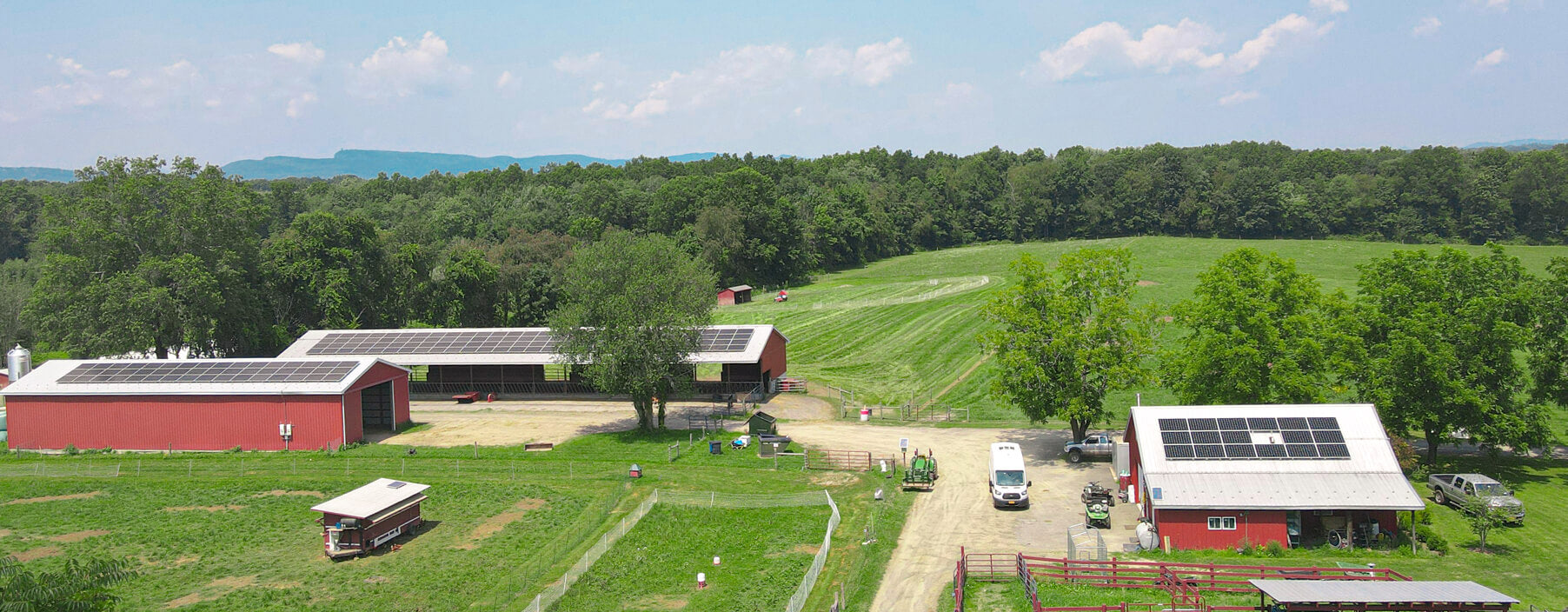
4 Ways Karl Family Farms Is Sustainable
Hey everyone! Farmer Kris here.
When we founded this farm ten years ago, our family embarked on a journey to transform an old, abandoned farmhouse into a state-of-the-art, sustainably run farm. While there have been many twists and turns over the last decade, our commitment to being accountable for our impact on the environment is one thing that hasn't changed.
From where we get our energy to how our animals graze, we're always mindful about how the decisions we make impact our environment. This mindset has helped us create an energy efficient farm that minimizes waste and maximizes the happiness of our animals. In this post I want to share with you some of the initiatives we've embraced as we pursue sustainability.
Solar Electricity
We have solar panels mounted on 3 of our barns. They provide more than 90% of our electricity each year, which seriously reduces our carbon footprint! Everything from our home to the barn runs on sunshine. I love thinking about how even when the animals are inside they're still under lights powered by the sun.
Rotational Grazing
Rotational grazing is a method of pasturing livestock that has so many benefits to the environment.
First, it reduces the need for us to use fertilizers and pesticides which can pollute the ground water. Second, it traps carbon in the ground. According to the Journal of Production, rotational grazing can cut the carbon footprint of a farm by nearly a third.
Rotational grazing is a pasturing system that uses the Earth's natural rhythms to do most of the work in maintenance. It reduces parasites, stimulates pasture growth, reduces erosion, and evenly fertilizes our pastures without ever burning any fossil fuels.
Animals love it because they regularly move to fresh paddocks, always giving them access to the best and newest forage. In turn, the animals help the land.
Cattle, sheep, pigs, goats, chickens, turkeys, ducks, geese, guinea hens, and donkeys all call this place home. They are rotated in several groups, first come the cattle, then the sheep, and so on until the chickens clean up the final parts.
The various sizes and types of feet and hooves aerate the soil in different ways and the unique eating styles of each species assures that our pastures maintain a diverse mix of grasses and forage.
Nothing Is Wasted
As a contemporary farm, we do everything possible to avoid waste. This starts with supplementing the diets of our chickens and pigs with an assortment of foods that include surplus vegetables, blemished fruit and spent brewery grains. While most of these materials come directly from our farm, we get some from our local community who share their resources for everyone's benefit.
Composting is another way we minimize waste. Materials like food scraps, crop waste, manure, bedding mulch, and other organic materials are all composted into a fertile mix for use on the farm. From our garden to the pastures, this is another way we can restore the land. This lets us close the loop a little bit more and provide for our land while keeping compostable waste out of landfills.
Supporting Wildlife
Our natural world is important to us, so we strive to make our farm a healthy environment for all that live nearby. Our staff works hard to make sure that our farming practices work in harmony with nature and provide habitat for the wild animals that have lived here since long before our farm animals and we showed up!
Committed to Sustainability
Being a farmer means being a steward of the land. Care for the environment is considered in everything we do at Karl Family Farms. Running on solar power frees us from fossil fuels. Composting and recycling makes the best use out of our waste. Practicing rotational grazing is as good for the land as it is for the animals. We do our best to live in harmony with the wildlife that naturally live near our farmland.
As we grow, we will continue to look for ways to do our part. We see the sustainable farming practices as one and the same with the humane treatment of livestock. Afterall, both work in symbiosis with each other.
Keep an eye out for more information about our sustainable farming practices.